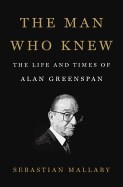Inside the Longlist: Narrative & Biography
December 14, 2016
The most influential and transformative lessons are those we discover on our own, in real world, real life stories and examples rather than in lists of steps or habits.
In our corner of the book world, people are always asking what is the actionable takeaway. The typical business book offers them up easily and in spades, with lists and steps, chapter summaries and quickly digestible ideas and insights.
Yet, I think the most influential and transformative lessons are those we discover on our own, in real world, real life stories and examples rather than in lists of steps or habits. Rather that being given the answers in list form, I’ve found narratives and biographies are great at bringing new questions to the surface, sparking inspiration and new insights that compel us to complete a picture of the world and what we need to do in it for ourselves. When you can connect the dot of your current moment in history to that of another mind or moment in time, when you realize the profound progress we've already made and understand how possible and necessary it is in the here and now, it provides a powerful internal compass to take with you rather than a checklist. Rather than work with someone else's solutions, historical narratives and biographies contain inspiration to come up with our own original ones, forcing ideas lurking just under the surface of our everyday lives into the open air.
The following five books open up those spaces and possibilities.
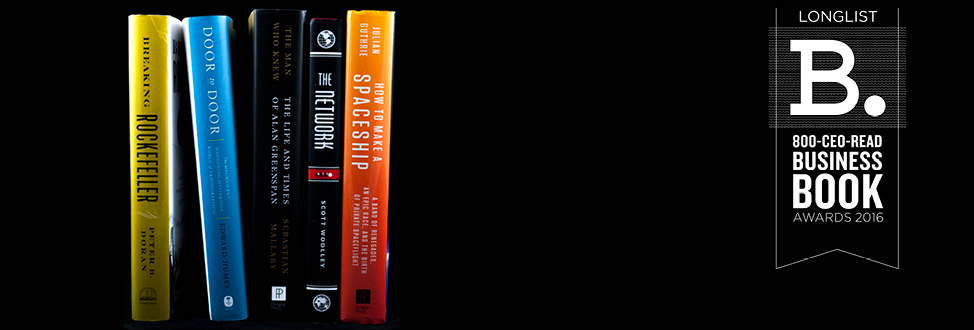
 The story of how John D. Rockefeller built his business empire is a remarkable rags-to-riches story on its own. The one that Peter B. Doran tells in Breaking Rockefeller: The Incredible Story of the Ambitious Rivals Who Toppled an Oil Empire is even bigger than that. It is a story that spans the globe, with cameos from Teddy Roosevelt, Winston Churchill, the Rothschilds, and more. The two key players are Marcus Samuel and Henri Deterding, who would come together to form Royal Dutch Shell and take on the monopoly of Rockefeller's Standard Oil. Today the fifth-largest company in the world when measured by revenues, Royal Dutch Shell began as a merger of the Deterding's Royal Dutch Petroleum Company and the Samuel's Shell Transport and Trading Company, which was named for the prolific trade in seashells the company did before entering the oil business. It was Samuel’s father that built the shell importing business, along with the network of international contacts and knowledge of sea shipping routes and logistics that laid the groundwork for the company’s foray into oil under his sons—an entrepreneurial adventure that would lead to the development of the modern day oil tanker and open the Suez Canal up to such vessels for the first time. While breathtakingly vast in scope, Breaking Rockefeller is also rich and entertaining in its examination of the everyday details of its characters’ lives and the landscapes (from gilded age New York and London to the oil fields of Pennsylvania and the Black Sea) they inhabited.
The story of how John D. Rockefeller built his business empire is a remarkable rags-to-riches story on its own. The one that Peter B. Doran tells in Breaking Rockefeller: The Incredible Story of the Ambitious Rivals Who Toppled an Oil Empire is even bigger than that. It is a story that spans the globe, with cameos from Teddy Roosevelt, Winston Churchill, the Rothschilds, and more. The two key players are Marcus Samuel and Henri Deterding, who would come together to form Royal Dutch Shell and take on the monopoly of Rockefeller's Standard Oil. Today the fifth-largest company in the world when measured by revenues, Royal Dutch Shell began as a merger of the Deterding's Royal Dutch Petroleum Company and the Samuel's Shell Transport and Trading Company, which was named for the prolific trade in seashells the company did before entering the oil business. It was Samuel’s father that built the shell importing business, along with the network of international contacts and knowledge of sea shipping routes and logistics that laid the groundwork for the company’s foray into oil under his sons—an entrepreneurial adventure that would lead to the development of the modern day oil tanker and open the Suez Canal up to such vessels for the first time. While breathtakingly vast in scope, Breaking Rockefeller is also rich and entertaining in its examination of the everyday details of its characters’ lives and the landscapes (from gilded age New York and London to the oil fields of Pennsylvania and the Black Sea) they inhabited.
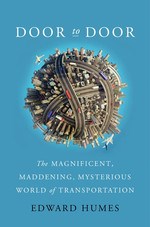 Pulitzer Prize winner Edward Humes takes up the story of modern transportation in Door to Door: The Magnificent, Maddening, Mysterious World of Transportation. Humes reverse engineers the story of our modern supply chain and transportation infrastructure by walking us through a day in the life of his family and tracing the products they use—from the iPhone to a morning cup of coffee—back to their source, and describing in detail the fantastic and complicated journey they take to arrive at their door. A deep immersion into issues ranging from traffic on America’s freeways and at its ports and airports, to the perfect recyclability of aluminum cans, it is a history of industry and an exploration of the trends shaping our transportation future. What it reveals is that, for all the recent advances in digital technology and communication and the attention they receive, it is our modern transportation infrastructure that has changed our lives and businesses more than anything else.
Pulitzer Prize winner Edward Humes takes up the story of modern transportation in Door to Door: The Magnificent, Maddening, Mysterious World of Transportation. Humes reverse engineers the story of our modern supply chain and transportation infrastructure by walking us through a day in the life of his family and tracing the products they use—from the iPhone to a morning cup of coffee—back to their source, and describing in detail the fantastic and complicated journey they take to arrive at their door. A deep immersion into issues ranging from traffic on America’s freeways and at its ports and airports, to the perfect recyclability of aluminum cans, it is a history of industry and an exploration of the trends shaping our transportation future. What it reveals is that, for all the recent advances in digital technology and communication and the attention they receive, it is our modern transportation infrastructure that has changed our lives and businesses more than anything else.
 I don’t think I’ve ever described a book as a romp, but How to Make a Spaceship: A Band of Renegades, an Epic Race, and the Birth of Private Spaceflight by Julian Guthrie could certainly fit the bill. The story of the XPRIZE, a $10 million dollar contest to build the first privately funded spacecraft, it is imbued with a childlike energy and enthusiasm, an inordinate amount of playful experimentation for such a serious undertaking, and unrestrained risk-taking—all pulled to the page from the characters that populate the book. As a book lover, it was delightful to discover a main character, Peter Diamandis, driven by a political philosophy and sense of what’s possible derived from two books—Ayn Rand’s Atlas Shrugged and The Spirit of St. Louis. The first charter Peter Diamandis wrote describing what would become the XPRIZE was titled “The John Galt”—the name of the main character in Rand’s novel— which he imagined would also be the name of the rocket that won the prize. In The Spirit of St. Louis, he found not only the model for the XPRIZE—the Orteig Prize offered by French hotelier Raymond Orteig that Charles Lindbergh would claim for his nonstop flight between New York City and Paris—he hit upon the inspiration to reach out to Lindbergh’s descendants, one of whom would have a crucial role to play in the story of the XPRIZE.
I don’t think I’ve ever described a book as a romp, but How to Make a Spaceship: A Band of Renegades, an Epic Race, and the Birth of Private Spaceflight by Julian Guthrie could certainly fit the bill. The story of the XPRIZE, a $10 million dollar contest to build the first privately funded spacecraft, it is imbued with a childlike energy and enthusiasm, an inordinate amount of playful experimentation for such a serious undertaking, and unrestrained risk-taking—all pulled to the page from the characters that populate the book. As a book lover, it was delightful to discover a main character, Peter Diamandis, driven by a political philosophy and sense of what’s possible derived from two books—Ayn Rand’s Atlas Shrugged and The Spirit of St. Louis. The first charter Peter Diamandis wrote describing what would become the XPRIZE was titled “The John Galt”—the name of the main character in Rand’s novel— which he imagined would also be the name of the rocket that won the prize. In The Spirit of St. Louis, he found not only the model for the XPRIZE—the Orteig Prize offered by French hotelier Raymond Orteig that Charles Lindbergh would claim for his nonstop flight between New York City and Paris—he hit upon the inspiration to reach out to Lindbergh’s descendants, one of whom would have a crucial role to play in the story of the XPRIZE.
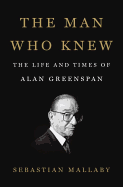 Speaking of Ayn Rand acolytes, perhaps you’ve heard of a somewhat peculiar fellow named Alan Greenspan? Sebastian Mallaby’s The Man Who Knew is a masterful work of biography on the economic statesman. It is at once intimate and expansive, reeaalllly loonngggg and intellectually hefty yet hard to put down. Telling the tale of how the precocious child of a single mother in Washington Heights grew up to have the second longest and most influential tenure at the head of America’s Federal Reserve System, it also acts as a history of the economic and political arguments that have gripped our nation since World War II, and the rise of modern finance. Oh, and did you know that Greenspan spent time at Juilliard and toured with a big band as a clarinet and alto sax player before entering the world of macroeconomics? That's just one of the many surprises you'll find in this revealing human portrait of a man that's often turned into a caricature in other accounts.
Speaking of Ayn Rand acolytes, perhaps you’ve heard of a somewhat peculiar fellow named Alan Greenspan? Sebastian Mallaby’s The Man Who Knew is a masterful work of biography on the economic statesman. It is at once intimate and expansive, reeaalllly loonngggg and intellectually hefty yet hard to put down. Telling the tale of how the precocious child of a single mother in Washington Heights grew up to have the second longest and most influential tenure at the head of America’s Federal Reserve System, it also acts as a history of the economic and political arguments that have gripped our nation since World War II, and the rise of modern finance. Oh, and did you know that Greenspan spent time at Juilliard and toured with a big band as a clarinet and alto sax player before entering the world of macroeconomics? That's just one of the many surprises you'll find in this revealing human portrait of a man that's often turned into a caricature in other accounts.
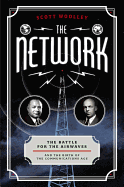 There is a story early in Scott Woolley’s book, The Network: The Battle for the Airwaves and the Birth of the Communications Age, just a few sentence long, that will stay with me the rest of my life. It is when Scott Woolley informs his readers that, as the 19th century turned over into the 20th, it was a common practice of New York City newspapers to use the clouds above the city "as floating billboards upon which giant spotlights blinked out election results, sports scores, and other big news in Morse code." It is those kind of fantastical yet true stories that remind me the age we live in today, while astonishing in its advances, is not necessarily unique. Woolley’s tale follows the lives and work of its two main characters, inventor Edwin Armstrong and businessperson David Sarnoff, through two world wars and the hi-tech wireless businesses of radio and television they pioneered as civilians in between and after them. It is, in the end, a story of our ugliest human instincts, corporate calculation, and personal betrayal, ending in tragedy. But it is also a story of exquisite imagination and vivid details on the birth of technologies we now take for granted, telling us of the first time humans bounced wireless signals off the moon and launched artificial satellites of our own into the sky, making such accomplishments seem almost magical again.
There is a story early in Scott Woolley’s book, The Network: The Battle for the Airwaves and the Birth of the Communications Age, just a few sentence long, that will stay with me the rest of my life. It is when Scott Woolley informs his readers that, as the 19th century turned over into the 20th, it was a common practice of New York City newspapers to use the clouds above the city "as floating billboards upon which giant spotlights blinked out election results, sports scores, and other big news in Morse code." It is those kind of fantastical yet true stories that remind me the age we live in today, while astonishing in its advances, is not necessarily unique. Woolley’s tale follows the lives and work of its two main characters, inventor Edwin Armstrong and businessperson David Sarnoff, through two world wars and the hi-tech wireless businesses of radio and television they pioneered as civilians in between and after them. It is, in the end, a story of our ugliest human instincts, corporate calculation, and personal betrayal, ending in tragedy. But it is also a story of exquisite imagination and vivid details on the birth of technologies we now take for granted, telling us of the first time humans bounced wireless signals off the moon and launched artificial satellites of our own into the sky, making such accomplishments seem almost magical again.





